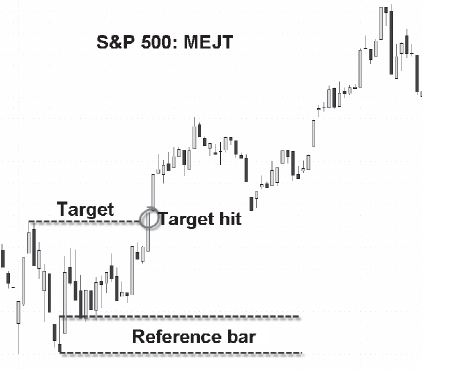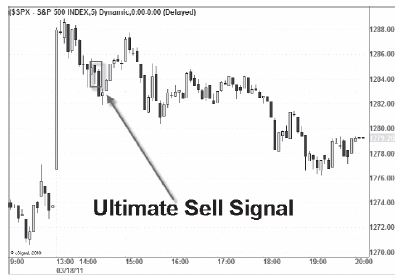 If there were a pecking order for the importance of world stock markets, right at the top would be the US S&P 500, or Spoos as it is affectionately known.
If there were a pecking order for the importance of world stock markets, right at the top would be the US S&P 500, or Spoos as it is affectionately known.
Why you should be trading the Spoos
While its older brother the Dow Jones will always be quoted first on the news and in the papers, there is no doubt which market professional traders keep a closer eye on.
The S&P 500 is made up of some of the biggest and best 500 companies in the world including world beaters such as Apple and Microsoft.
I’m often surprised that the S&P 500 (or Spoos as it’s often called) doesn’t get as much attention as it should, especially with UK traders as it is a very tradable market. The FTSE 100 often dances to the S&P 500’s tune so why not just cut to the chase and trade at the source.
The US trading session opens at 9.30am New York time until 4 PM. From the UK this equates to 2.30 PM until 9PM, giving plenty of scope for post work trading.
There are various trading zones throughout the day, starting with the mad thrashing of the opening hour, the lull around lunchtime, the backing and filling in the afternoon then a busy last half hour.
However, a new trading system claims that there are certain points in the trading day that can predict how the market will behave over the next couple of days. Specifically, one reference bar around 9.00am Central Time (usually 4.00 PM UK time) can be one of the most important of the entire trading day.
MEJT
The MEJT system has been developed by Jeffrey Tennant MD, who came up with the idea based on conversations with fellow traders in an online chat room. The underlying principle behind the system is that if the market were to trend sustainably during the morning, its retraces would not go through a particular bar.
This pivotal bar is known as the MEJT. The MEJT system then makes predictions for the two days’ action based on the activity of the following two bars.
This set up is relatively simple to identify with no complex technical indicators to apply. Certain levels are drawn on the chart based on the MEJT bar activity and price targets are drawn up that are generally expected to be hit within two days.
The system is best applied using the TradeStation software, with coding provided to help you automatically spot the different levels. You don’t need custom charting to be able to work the system, but the author does state that he can’t vouch for the performance outside of TradeStation.
Below you can see a trading set-up generated by one of the various ways to trade the MEJT:

Confirmation
It would probably be more correct to call MEJT a confirmation tool rather than a system. It does not offer specific buy and sell signals, rather it will give you confirmation that a certain trade is a good idea or cut your losing trades by helping you to avoid a trade in the opposite direction.
According to the author, since 2005 90% of over 2,500 signals have hit their targets within the preferred time frame (usually two days).
A practical use of the system might be to avoid going long if you knew there was an unfilled lower target left over from yesterday. If you knew that the target had a 90% chance of being hit, it might be enough for you to avoid the trade and hopefully avoid a loss.
There is also a trade set up called an ultimate signal, so called because the price will ultimately retrace from this level at some point in the future. According to the author after over 500 signals since 2005, only one target has failed. Naturally, a signal without any time limit can be of limited use, but as the ultimate sell signal almost always seems to print within a day or two, it can be a very useful reference point.

Above you can see how a recent Ultimate Sell Signal predicted that the market would eventually retrace.
The bottom line
The MEJT System is well presented in the colourful book published by Harriman House. There are plenty of screenshots demonstrating how to use the system, though I feel it would have benefited from a few close-up examples showing step by step how the method is set up.
MEJT is not really a system at all, but what appears to be a very useful framework to help guide your own trading systems. Indeed, even with the current mad thrashings of the stock markets MEJT helped me miss a couple of trades that would have been loss making.
This strategy is therefore not aimed at complete beginners, and will best suit those who already trade some sort of strategy of their own. Having said that, I would have liked the author to provide examples of the ways in which he trades around the MEJT with existing systems, at least just to whet people’s appetite.
Overall, MEJT is a well put together strategy that would be of benefit to intermediate level traders upwards.
Value For Money: 4/5 – Were this to come as a heavily-marketed ebook, it would probably be three times the price so it’s good value for what there is here.
Profit Potential: 3/5 – A very useful filter, but you will need some semblance of a method to lead it.
Ease Of Use: 3/5 – The manual would have benefitted from some examples which break down the set-ups step by step, but overall it is easy enough to understand.
Longevity: 3/5 – Appears to be robust with results stretching back to 2006.
Overall rating: 3/5 – A good filter which has helped me avoid a few losing trades already.
DETAILS:
Cost: Published edition £31.49, Kindle edition £23.62.
Audience: Traders looking at short-term moves on the US markets.
Level: Intermediate upwards.
